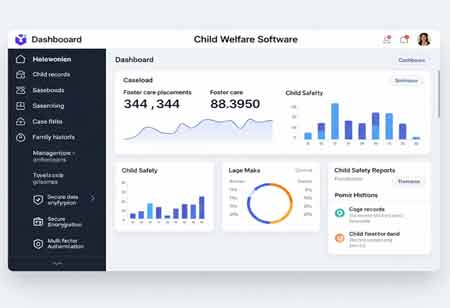THANK YOU FOR SUBSCRIBING
Be first to read the latest tech news, Industry Leader's Insights, and CIO interviews of medium and large enterprises exclusively from Gov CIO Outlook
THANK YOU FOR SUBSCRIBING

By
Government CIO Outlook | Tuesday, May 09, 2023
Stay ahead of the industry with exclusive feature stories on the top companies, expert insights and the latest news delivered straight to your inbox. Subscribe today.
Planned emergency responses can be improved with employee training, emergency response simulations, and other related exercises.
FREMONT, CA: Businesses must have a disaster management plan in an increasingly interconnected and complex global economy. Whether it's a natural disaster, new regulations, a malfunctioning piece of equipment, or a human error, companies worldwide must get prepared to respond. Many businesses have effective emergency planning and response strategies; some only address the gaps in their plans after something negative has occurred. The essential thing for a company to do is to ensure the safety of its employees. Companies can demonstrate the importance of protecting their employees, the environment, and the community by addressing potential hazards and risks.
Fees for disobeying regulations are avoidable expenses. By systematically matching rules with reaction plans and their components, the company can identify plan defects that could result in unnecessary fines or shutdowns. Reaction strategies fail because they need to be updated. Most response plans include numerous administrative tasks that must be performed constantly. A consistent emergency response system for the entire organization can provide site-specific information and management-approved action plans. Standardization enables workers and responders throughout an organization to comprehend their duties and responsibilities.
Companies should effectively utilize their employees, responders, equipment, and funds so that a crisis or natural disaster does not cause excessive destruction. A program for emergency management will be more effective if existing resources are realigned, inefficiencies are addressed, and funds are set aside for additional response training or improved equipment. It establishes a consensus regarding what should be done. Responders can more accurately measure, prioritize, and manage incidents when using consistent, site-specific methods. Using the risk assessment procedure can identify potential emergencies.
The layout of the building or location may affect the safety or ability to respond. Change or eliminate conditions that endanger people, the environment, infrastructure, and the surrounding communities. When potential dangers and threats are identified, measures can be taken to lessen or eliminate the possibility of an emergency. Training employees, updating safety procedures, and acquiring new equipment are a few methods to reduce risk. Emergencies result in a cessation of operations and a decline in output, which reduces the amount of money in the bank. By having an effective emergency response plan in place, problems can get managed and demobilized rapidly, reducing costs and downtime.
Proactive compliance efforts, safety programs, training and exercises, and planning for response and resilience are typically less expensive than regulatory penalties, long-term response efforts, and the overall effects of an incident. Risk assessments can aid in preventing catastrophes. Employee training, emergency response simulations, and other relevant exercises can reveal gaps in emergency response planning. Incorporating appropriate training and testing response plans with detailed scenarios will improve response skills and coordination while decreasing reaction times.
I agree We use cookies on this website to enhance your user experience. By clicking any link on this page you are giving your consent for us to set cookies. More info

However, if you would like to share the information in this article, you may use the link below:
www.govciooutlookeurope.com/news/perks-of-emergency-response-planning-and-management-nid-1907.html



